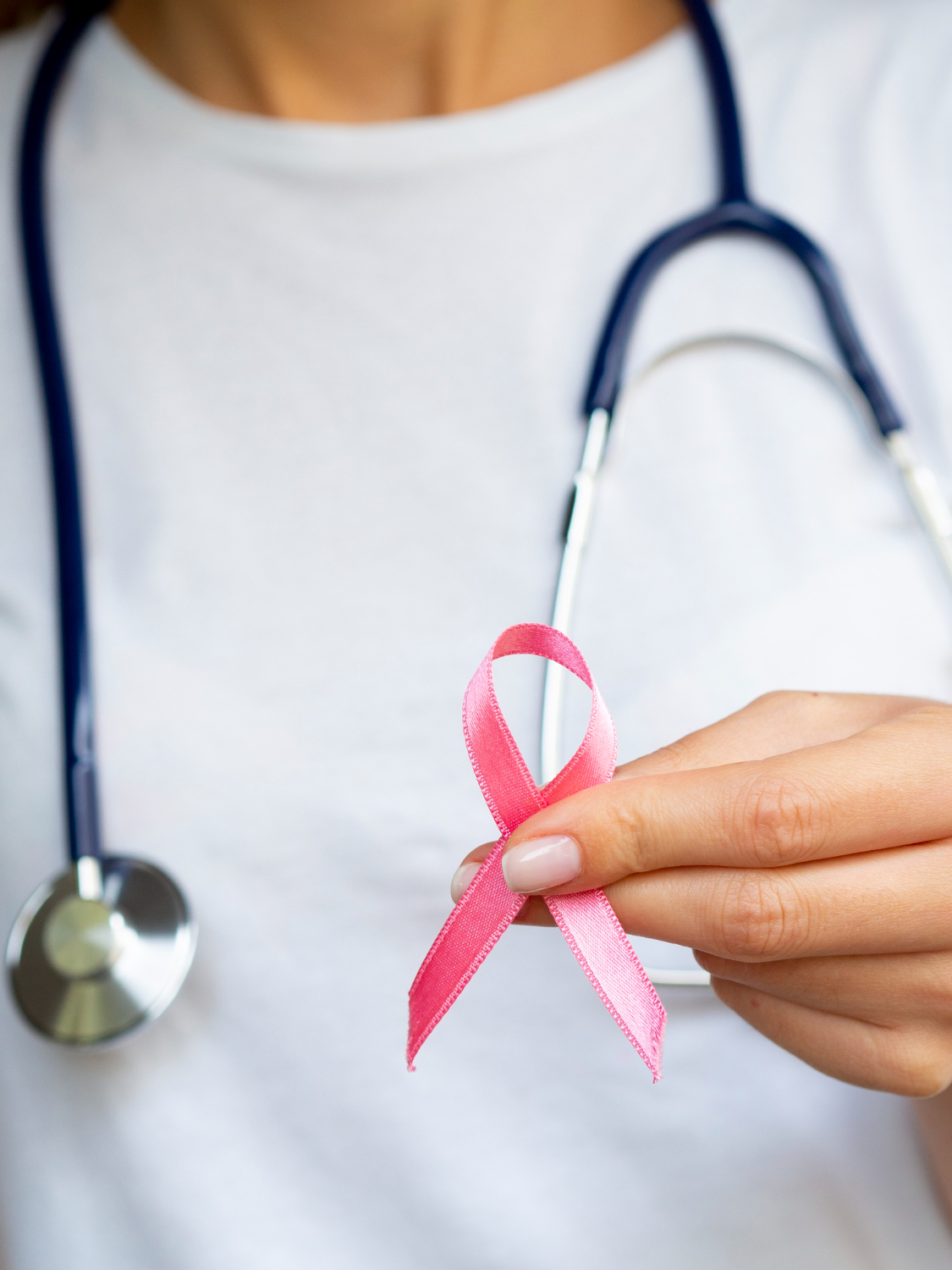Breast cancer remains one of the most prevalent forms of cancer among women worldwide. It’s a disease that not only affects the physical health but also has profound emotional and psychological impacts. While significant progress has been made in understanding and treating breast cancer, there is still much to learn. In this article, we delve into the complexities of breast cancer, exploring its symptoms, risk factors, and preventive measures
Understanding Breast Cancer:
Breast cancer occurs when abnormal cells in the breast tissue grow and divide uncontrollably. These cells can invade nearby tissues and spread to other parts of the body, forming tumors. While breast cancer primarily affects women, men can also develop it, albeit less frequently.
Symptoms of Breast Cancer:
Early detection is crucial for effective treatment of breast cancer. Being aware of the symptoms can help individuals seek medical attention promptly. Some common signs of breast cancer include:
Lump or Mass: The most common symptom is a lump or mass in the breast tissue. While not all lumps are cancerous, any new lump should be evaluated by a healthcare professional.
Changes in Breast Size or Shape: Breast cancer may cause changes in the size, shape, or appearance of one or both breasts.
Skin Changes: Redness, dimpling, or puckering of the skin on the breast or nipple may indicate underlying breast cancer.
Nipple Changes: Changes in the nipple, such as inversion, discharge, or scaling, should be evaluated by a healthcare provider.
Pain: While breast cancer typically isn’t painful in its early stages, some individuals may experience breast or nipple pain.
It’s important to note that not all individuals with breast cancer will experience these symptoms, and some may not experience any symptoms at all. Regular breast self-exams and mammograms can aid in early detection.
Risk Factors for Breast Cancer:
Several factors may increase an individual’s risk of developing breast cancer. These include:
Gender: Women are at a significantly higher risk of developing breast cancer compared to men.
Age: The risk of breast cancer increases with age, with most cases diagnosed in women over 50.
Family History: A family history of breast cancer, especially in first-degree relatives, can increase one’s risk.
Genetics: Inherited gene mutations, such as BRCA1 and BRCA2, significantly increase the risk of breast cancer.
Reproductive Factors: Early onset of menstruation, late menopause, and never giving birth or having a first child after age 30 may increase the risk.
Hormone Replacement Therapy (HRT): Long-term use of hormone replacement therapy after menopause may increase the risk of breast cancer.
Lifestyle Factors: Factors such as obesity, excessive alcohol consumption, and lack of physical activity may also contribute to an increased risk of breast cancer.
Prevention and Early Detection:
While some risk factors for breast cancer, such as age and genetics, are beyond individual control, there are steps individuals can take to reduce their risk and detect breast cancer early:
Regular Screening: Women should undergo regular mammograms as recommended by their healthcare provider. Mammograms can detect breast cancer in its early stages when treatment is most effective.
Breast Self-Exams: Performing regular breast self-exams can help individuals become familiar with their breasts and detect any changes early.
Maintain a Healthy Lifestyle: Adopting a healthy lifestyle, including maintaining a healthy weight, staying physically active, limiting alcohol consumption, and avoiding smoking, can help reduce the risk of breast cancer.
Genetic Counseling: Individuals with a family history of breast cancer or known genetic mutations should consider genetic counseling and testing to assess their risk.
Breastfeeding: Women who are able to breastfeed should consider doing so, as breastfeeding has been associated with a reduced risk of breast cancer.
Conclusion:
Breast cancer is a complex disease with multifactorial causes, but early detection and advances in treatment have significantly improved survival rates. By understanding the symptoms, risk factors, and preventive measures associated with breast cancer, individuals can take proactive steps to protect their health. Regular screenings, healthy lifestyle choices, and awareness of changes in breast tissue are essential components of breast cancer prevention and early detection efforts. With continued research and awareness, we can strive to reduce the burden of breast cancer on individuals and society as a whole.
Frequently asked questions
What are the early signs of breast cancer?
Early signs of breast cancer may include a lump or mass in the breast tissue, changes in breast size or shape, skin changes such as redness or dimpling, nipple changes including inversion or discharge, and breast or nipple pain. It’s important to note that not everyone with breast cancer will experience these symptoms, and some may not experience any symptoms at all.
At what age should I start getting screened for breast cancer?
Screening recommendations vary based on individual risk factors and guidelines from healthcare organizations. In general, women at average risk should begin regular mammograms at age 40 and continue annually or biennially based on their healthcare provider’s recommendation. Women with a family history of breast cancer or other risk factors may need to start screening earlier or undergo additional tests.
What are the risk factors for breast cancer?
Several factors may increase the risk of developing breast cancer, including gender (women are at a higher risk), age (risk increases with age), family history of breast cancer, genetic mutations such as BRCA1 and BRCA2, reproductive factors, hormone replacement therapy (HRT), lifestyle factors such as obesity and alcohol consumption, and exposure to radiation.
Is breast cancer genetic?
While most cases of breast cancer are not directly linked to inherited genetic mutations, about 5-10% of breast cancer cases are hereditary, meaning they result from gene mutations passed down through families. Mutations in genes such as BRCA1 and BRCA2 significantly increase the risk of developing breast and ovarian cancer.
Can men get breast cancer?
Yes, although much less common, men can develop breast cancer. Men account for less than 1% of all breast cancer cases. Risk factors for male breast cancer include older age, family history of breast cancer, genetic mutations, and conditions such as Klinefelter syndrome.
What lifestyle changes can help reduce the risk of breast cancer? Adopting a healthy lifestyle can help reduce the risk of breast cancer. This includes maintaining a healthy weight, staying physically active, limiting alcohol consumption, avoiding smoking, breastfeeding if possible, and minimizing exposure to environmental toxins.
What treatments are available for breast cancer?
Treatment for breast cancer depends on several factors, including the stage of the cancer, its characteristics, and the individual’s overall health. Treatment options may include surgery (such as lumpectomy or mastectomy), radiation therapy, chemotherapy, hormone therapy, targeted therapy, and immunotherapy. Treatment plans are personalized for each patient and may involve a combination of these approaches.
Is breast cancer preventable?
While not all cases of breast cancer are preventable, certain lifestyle choices and risk-reduction strategies can help lower the risk. These include maintaining a healthy weight, staying physically active, limiting alcohol consumption, avoiding smoking, breastfeeding if possible, undergoing regular screenings, and knowing one’s family history to assess genetic risk factors. Early detection through regular screenings is crucial for improving treatment outcomes







